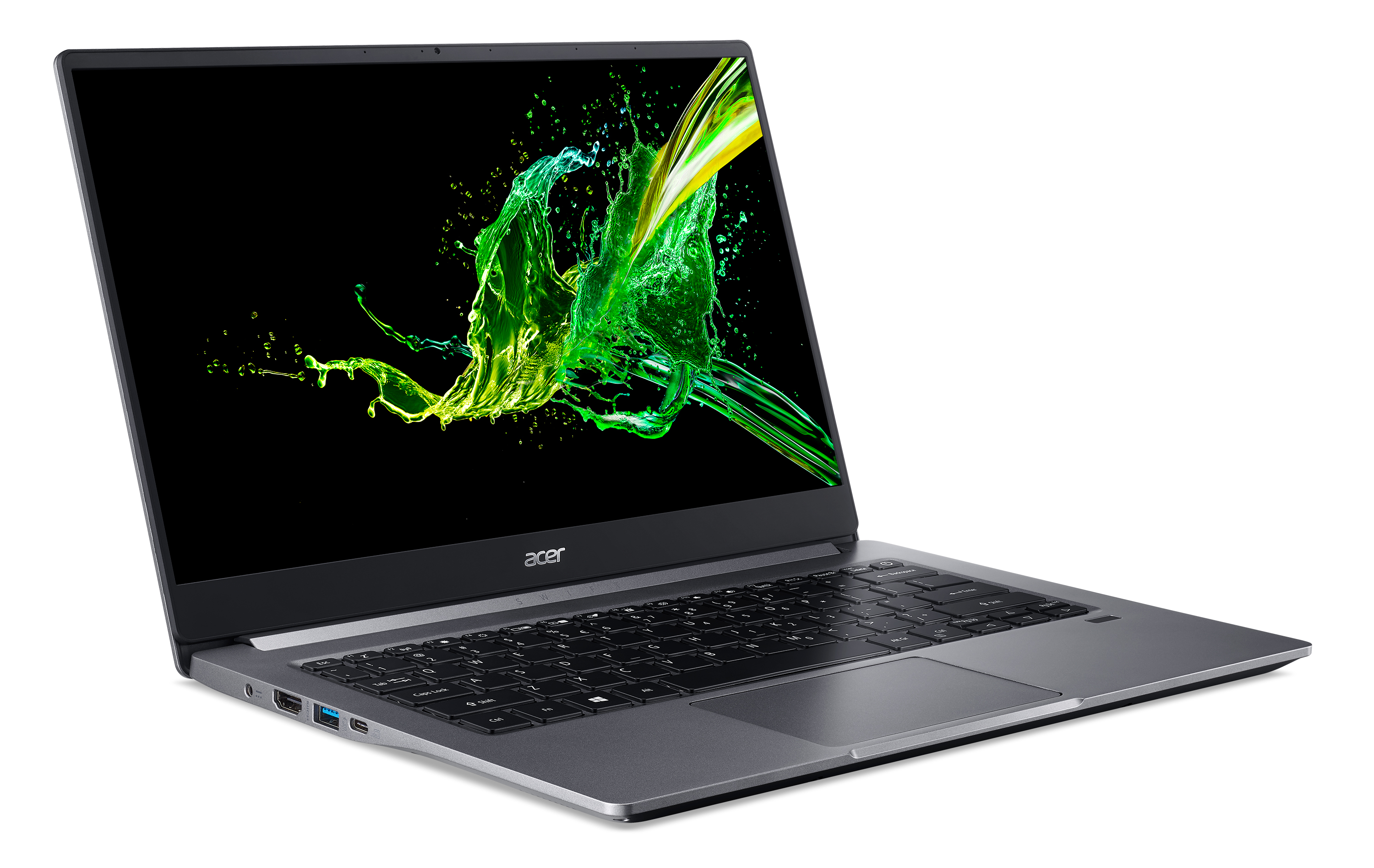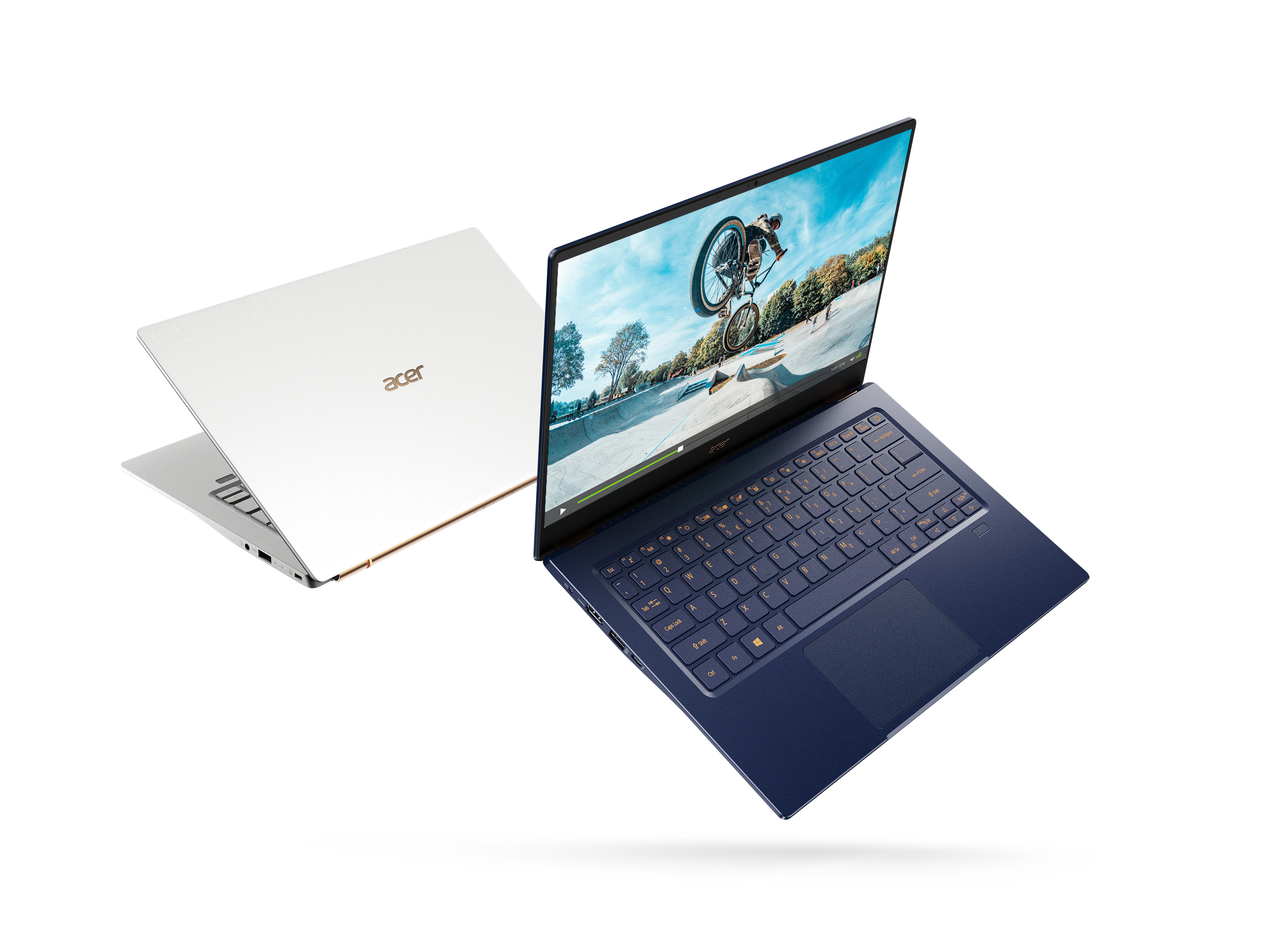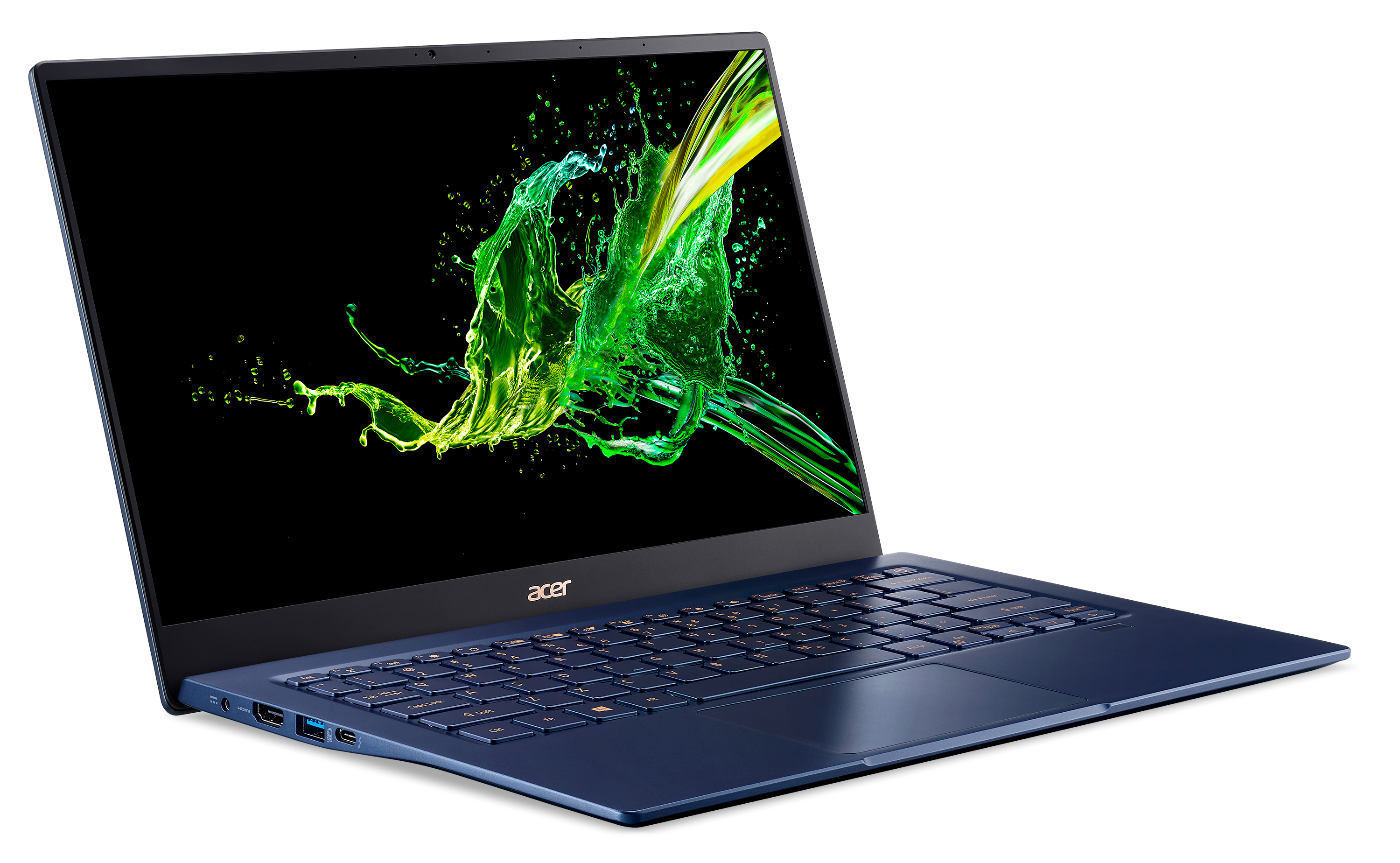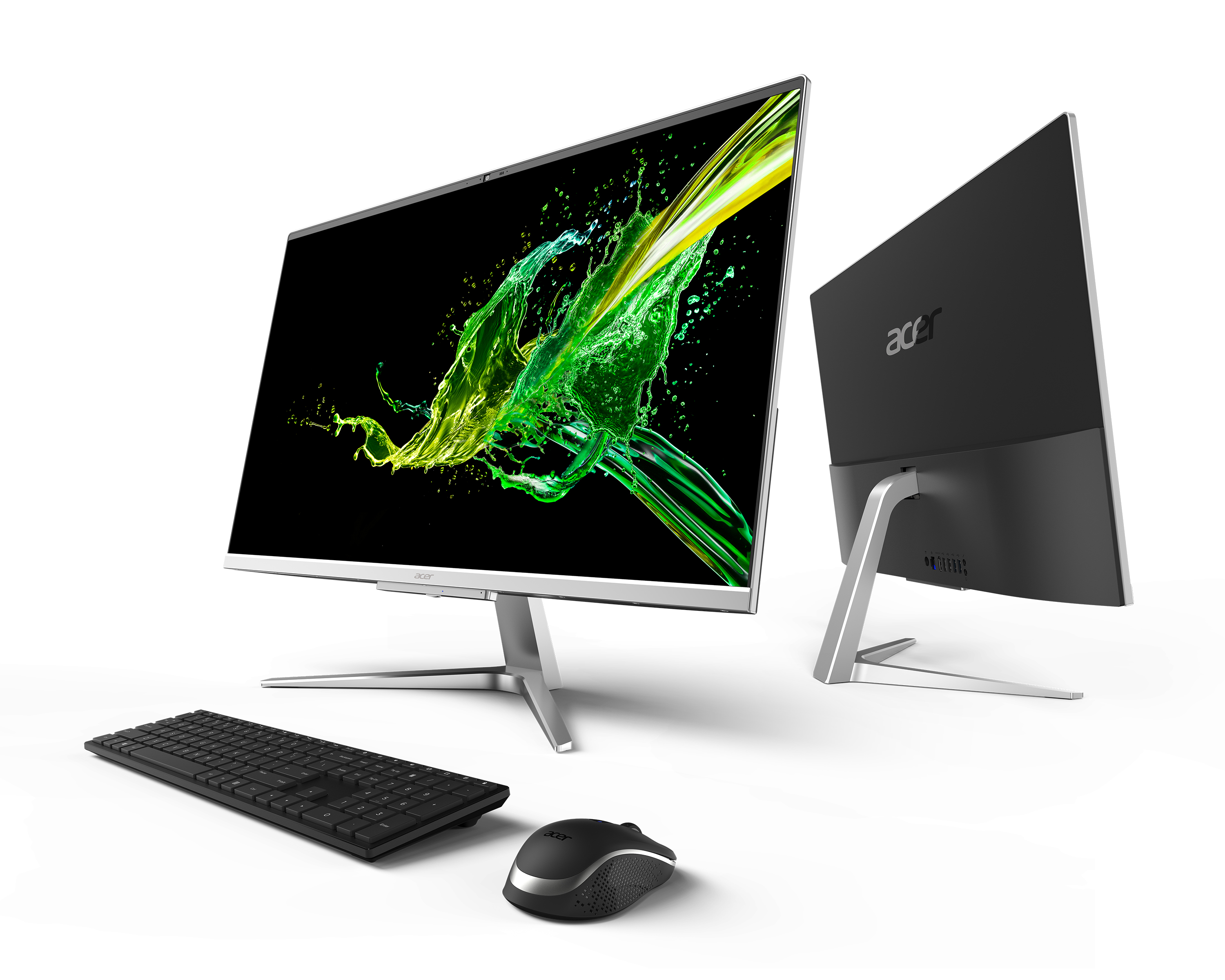In advance of the IFA tech show in Berlin, Acer announced refreshed versions of its popular Swift 3 and Swift 5 notebooks. Both models are picking up significant performance upgrades to Intel’s 10th-gen Ice Lake processors, and the Swift 5 is now getting a big upgrade to optional Nvidia MX250 graphics.
We begin first with the Acer Swift 5 which is set for availability later in September starting at $900. Keeping the same lightweight magnesium design it is famous for, the notebook now weighs in at less than 990 grams and is just 14.95 mm thin. Acer is calling it the “lightest 14-inch notebook.” Addressing our biggest complaint from the early 2019 model, it also sports an option for the Nvidia GeForce MX250 graphics card, with a separate model featuring Intel’s Iris Pro graphics.
Elsewhere under the hood, the refreshed Swift 5 sports up to a 10th-generation Intel Core i7-1065G7 processor, and up to 512GB of PCIe storage. Up from nine hours, battery life is upgraded from last year’s model, now promised at 12.5 hours for general productivity. Elsewhere, it sports the same USB 3.1 Type-C connector, dual-band Intel Wi-Fi 6 and support for Windows Hello through a fingerprint reader. It should be noted that USB Type C port now supports Thunderbolt 3.
Next up, there is the refreshed Acer Swift 3, which is set for availability this November starting at $700. Also lightweight and slim at 2.65 pounds and 15.95 mm thin, it, too, has options for up to the 10th-generation Intel Core i7-1065G7 processor, or the Nvidia GeForce MX250 GPU. Models without a GPU and featuring Intel Iris Plus Graphics are also available. Its storage can be configured up to 512GB, with up to 16GB of RAM. Battery life is rated at 12.5 hours and it features the same ports and Wi-Fi connectivity as its bigger sibling, the Acer Swift 5.
Finally, there is the new Aspire C series. These all in one-desktops come in 27-inch, 24-inch, as well as 22-inch sizes. They are also powered by 10th-generation Intel Core processors and an optional discrete Nvidia MX130 GPU. Storage options include either a 2TB M.2 NVMe SSD and up to a 2TB 2.5 inch HDD. RAM can be configured up to 32GB. Other features include an option to close the camera shutter when the webcam is not in use, as well as four USB 3.1 Gen 1 ports. Availability is set for the spring, with the 24-inch version coming in at $700.
Editors' Recommendations
- Intel Raptor Lake CPUs: Everything we know about the 13th-gen processors
- Intel 10th-gen Ice Lake CPUs: Everything we know so far
- Intel unveils 11th-gen Tiger Lake specs, revealing huge upgrade to clock speed
- Intel launches 10-core 10th-gen desktop chips. Can they hold up against Ryzen?
- Intel’s newest 10th-gen chips bring blazing 5.3GHz speed, trail AMD in cores







